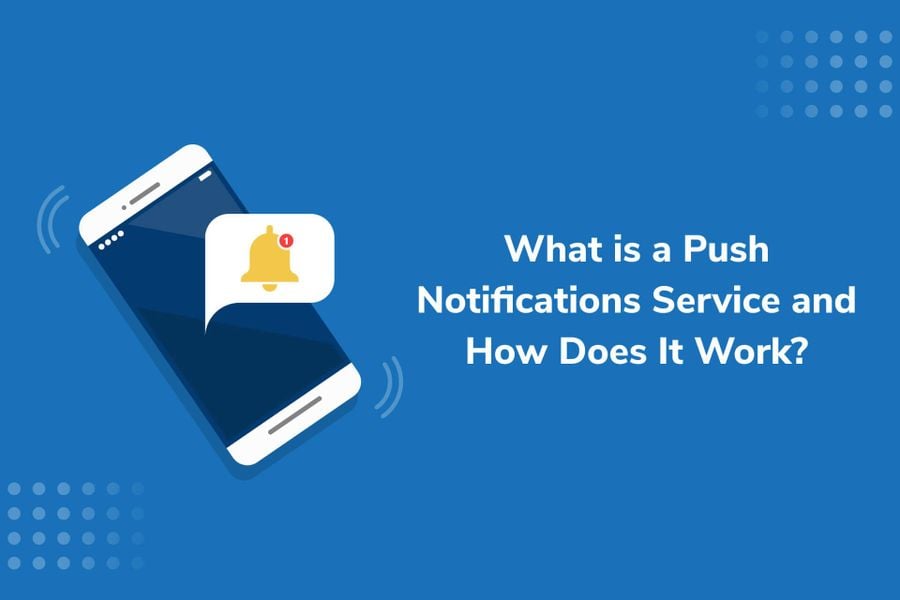Before they can send push notifications to users, apps need to be configured and registered with push notification services. The process of sending push notifications involves several parties.
What parties are involved in sending a push notification?
- The Operating System Push Notification Service (OSPNS), or push notifications service
- The App Publisher
- The Client App
Every mobile app platform, such as iOS and Android, has their own OSPNS, or push notification service, that developers can use to deliver push notifications.
App publishers must build their apps with OSPNS’s enabled to connect with iOS and/or Android phones.
To do so, publishers need to register with each OS’s push notification service, which gives developers access to the OSPNS API. This API provides a way for the app to communicate with the service. The app publisher then adds the push provider SDK to the app and then uploads the app to the app store. When users subscribe to push through the provider’s SDK, they are added as a subscribed device.
What’s a push notification provider?
Push notification providers empower apps to send notifications to their users. They allow you, the app publisher, to easily send messages– from hot deals to friendly reminders to cart abandonment campaigns– that boost retention and conversions.
A push notification provider gives you a platform on which you can create, schedule, and deliver messages to your users, whether or not they are using your app.
These providers give you a platform for composing, targeting, and executing message campaigns. (Some app publishers may instead opt to build out this infrastructure independently, but it’s easier/saves bandwidth to use a push provider to do so)
How do push notifications work in iOS and Android operating systems?
iOS
In iOS, users must explicitly sign up for push when they download your app. On iOS devices, push notifications appear in Apple’s Notification Center, which a user can access by swiping down from the top of their screen. This operating system also allows users to choose how their notifications appear on the app level, giving them the freedom to customize the style, sounds, and badge associated with a message.
iOS push notifications work in the following way
- Client app configures with APNS using a p.12 certificate with Apple
- Notifications are sent to Apple by provider
- Notification is sent to and received by the Apple Notification Servers
- APN server sends notification to the appropriate device or devices (can be sent to individual users or groups of users)
What is Apple Push Notification Service and how does it work?
APNS or Apple Push Notification Service launched in 2009 as the very first mobile push notification service.
APNS is a cloud-based service that enables apps to send push notifications from a remote server to iOS users through a secure connection. Before iOS users receive your messages, you’ll need a p.12 certificate from Apple, which authorizes push sending through APNS. When a user launches your app, the system forms an IP connection between the app and APNS. Push notifications are sent from the APN servers to subscribers after users opt in.
Android
Unlike iOS users, Android users are automatically opted in to receive push notifications, this leads to new Android users being more likely to be opted-in to notifications. On the other hand, Android users are quick to opt-out of notifications that they don't want to receive.
Android displays notifications with less customizations than in iOS, showing them in only a standard banner format.
Android push notifications work in the following way
- Client app creates Firebase project with keys to authorize sending push on FCM
- Notifications are sent to Google by provider
- Notification is sent through FCM
- FCM server delivers notification to appropriate device or devices
What is Firebase Cloud Messaging?
Firebase Cloud Messaging (FCM) is a cloud-based, cross platform service for sending notifications in Android, iOS, and web apps. Google first launched Google Cloud to Device Messaging in May 2010. FCM inherited GCM’s core infrastructure in 2014.
What is a push notification payload?
Every notification you send includes a payload, which is the information it contains. This includes custom data such as the segment you’re sending to and the message content itself.
What should you look for in choosing a push notification provider?
Staying current with changes to push notification services is important to keep your notifications functioning seamlessly. Many companies choose to use a push notification provider to quickly and easily send notifications via different devices without doing a lot of development upkeep. But not all push notification providers are created equally — check out our related article on what to look for in a push provider.
Get Started with OneSignal
OneSignal is designed to help you send notifications and seamlessly manage your user communication across a variety of channels, including mobile push notifications, web push notifications, bulk SMS, in-app messaging, and email. Our platform is quick to set up and makes it easy to send eye-catching messages without doing any development work. If you don't have a OneSignal account, you can create one for free and start sending push notifications to your users today. Don't take our word for it — simply sign up and see for yourself!
Create a Free Account



